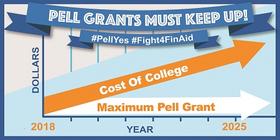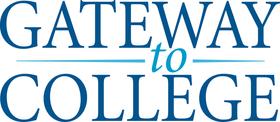Introduction
For many families, community college (or two-year college) is an affordable, accessible route to higher education. But despite lower tuition, costs remain — from books and supplies to living expenses. Scholarships can bridge that gap. This article provides a comprehensive, up-to-date guide for parents and students navigating scholarships for community college students in 2025, with concrete examples, strategies, and warnings.
Why Scholarships Matter at Community Colleges
Unlike federal loans or Pell Grants, scholarships do not need to be repaid.
They help reduce reliance on student loans or part-time work.
For students planning to transfer to a four-year university, a scholarship in the two-year phase can free up financial resources later.
They play a crucial role in retention: students with scholarship support are likely to complete their programs.
Parents often ask: “Should we bother applying to scholarships for community college? Isn’t it mostly for four-year schools?” The answer is yes — there are meaningful opportunities specifically targeting community college students, and leveraging them is wise.
Types of Scholarships Available
Scholarships for community college students generally fall into these categories:
| Type | Who Offers It | Typical Criteria | Examples / Notes |
|---|---|---|---|
| Institutional / college-based | Community college’s foundation or scholarship office | Enrolled students (often minimum credits), GPA, essays | Many colleges bundle all internal scholarships under one application. For example, North Hennepin Community College offers over 120 scholarships ranging from $500 to $5,000. |
| State & system scholarships / “Promise” programs | State governments or community college systems | Residency, income, application to college | For example, Maricopa Community Colleges (AZ) offer 600+ scholarships. |
| Thematic / niche scholarships | Nonprofits, foundations, corporations | Field of study, identity, extracurriculars | The Point Foundation Community College Scholarship supports LGBTQ+ and ally students. |
| National / external scholarships | National nonprofit or corporate funders | Open to community college students | Scholarship America lists multiple scholarships aimed at community college enrollees. |
It’s important to note that while many external scholarships are open to all undergraduates, only a subset explicitly include community college students.
Recent & Noteworthy Examples (2025)
Here are some current or recent scholarship programs open to community college students:
Scholarship America maintains a list of scholarships for community college students such as the Frontline Families Scholarship Fund, Steiner Family Scholarship, and others. Scholarship America
Point Foundation Community College Scholarship awards $2,400 per semester (or $4,800 per year) to eligible students in associate degree tracks who plan to transfer. pointfoundation.org
Internal college scholarships—e.g. Normandale Community College’s general foundation scholarships for 2025–26 are open now. normandale.edu
Bold.org offers dozens of scholarships with upcoming deadlines directed to community college students. Bold
These examples show that opportunities are active now, so students should act early.
What Parents Should Ensure (Checklist)
To support a student applying for scholarships:
Encourage early planning
Many internal college scholarships have early deadlines—often before the fall semester begins.Monitor GPA & credit load
Most scholarships require a minimum GPA (e.g. 2.5 or 3.0) and a minimum enrollment (half-time or more). The Point Foundation, for instance, requires at least a 2.5 GPA.Help prepare documents
Common requirements: transcript, essays, letter(s) of recommendation, FAFSA or financial data.Track deadlines
Use a shared calendar to track college and external scholarship due dates.Encourage applying broadly
Even smaller awards help. Many students don’t apply because they feel the chances are slim—but competition is less intense for niche scholarships.Stay organized
Keep copies of submissions, follow up if necessary, and maintain evidence of awards received.Check renewal terms
Some scholarships are one-time; others are renewable contingent on maintaining grades or credit thresholds.
Common Challenges & How to Overcome Them
Challenge 1: Limited awareness
Often students assume scholarships are only for four-year universities. Counter this by checking the scholarships or financial aid page on the community college website.
Challenge 2: Narrow eligibility
Some scholarships exclude community college students. Always read the fine print.
Challenge 3: High competition
For popular external awards, competition is stiff. Mitigate by applying to many scholarships—even smaller ones.
Challenge 4: Short application windows
Some scholarships pop up late. Make sure the student checks scholarship aggregators monthly (e.g., Scholarships360).
Challenge 5: Lapses in funding
State or institutional funding can change year to year. Don’t assume a scholarship will exist in future years—plan backup funding.
Strategy: Building a Scholarship Action Plan
Below is a sample semester timeline and strategy:
| Timeframe | Action Items |
|---|---|
| Spring (before enrollment) | Research the college’s internal scholarships; prepare essays and ask for recommendations |
| Summer / August | Ensure FAFSA (or equivalent) is filed; submit institutional scholarship application |
| Fall term (first month) | Search external scholarships and submit early applications |
| Winter | Reassess new opportunities; apply for midyear scholarships |
| Spring | Review renewal criteria; reapply if applicable; save award letters for tax/aid docs |
Parents can help by reminding, proofreading applications, and ensuring the student stays on schedule.
How Scholarships Interact with Other Aid
Pell Grants & state aid come first; scholarships often cover remaining “gaps.”
Earning a scholarship may not reduce other need-based aid (check with the financial aid office).
In some cases, a scholarship award is applied first, then aid is adjusted downward, so confirm policies.
When a Scholarship Doesn’t Come Through
Despite efforts, not every student wins awards. In that case:
Seek emergency or short-term stipend funds via the college’s student success office.
Explore work-study or campus employment programs.
Encourage part-time jobs in related fields to gain experience and income.
Revisit scholarship search each term; new ones open throughout the year.
Final Thoughts
Scholarships for community college students are often overlooked—but the opportunities are real and meaningful. For parents, being proactive, organized, and supportive can make the difference between a student struggling to pay and one who can focus on learning.
By combining institutional awards, state incentives, and external scholarships, many community college students can dramatically reduce or eliminate their out-of-pocket costs. The key is starting early, applying broadly, and staying persistent.
For parents and students willing to prepare and track opportunities, the community college years need not be a financial strain—they can serve as a strong, affordable foundation toward higher educational goals.















